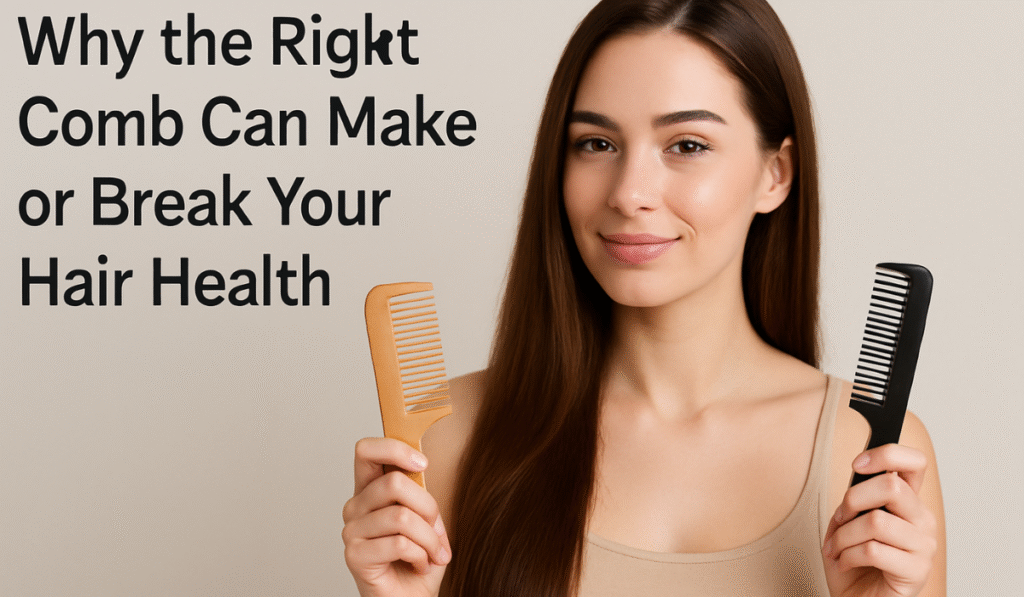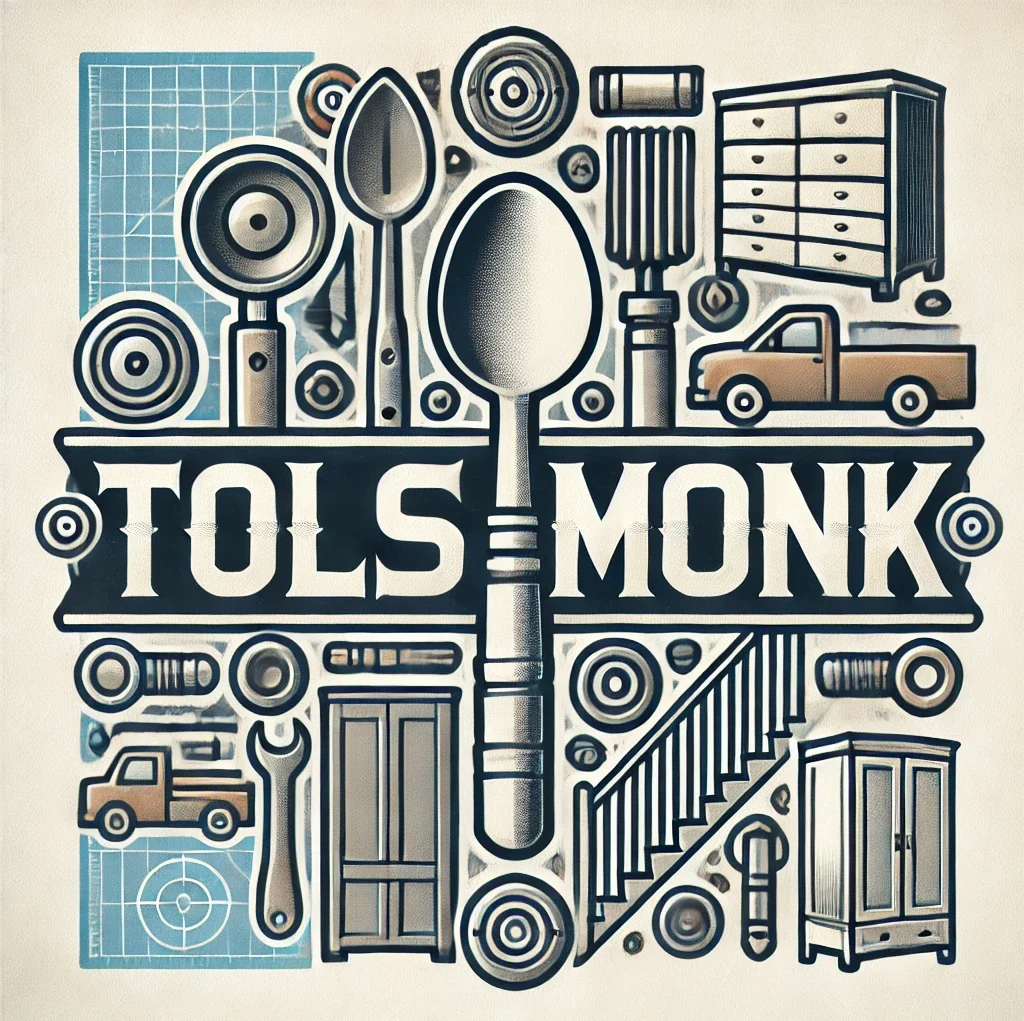
Hair care isn’t just about what you put into your hair—it’s also about what you use on it daily. Most people invest in expensive shampoos, oils, and conditioners, but often ignore one simple item: the comb. This everyday tool might seem minor, but its impact on your hair health is much bigger than you think.
Choosing the right comb is not just about appearance or style. The wrong one can cause breakage, scalp irritation, or even accelerate hair fall. On the other hand, the right comb can improve scalp circulation, help manage tangles, reduce breakage, and keep your hair healthier in the long run.
Let’s dive deep into how something so small can have such a big effect on your hair’s well-being.
Why Combing Matters We often think of combing as a styling step, not a care step. But here’s the truth: every time you comb your hair, you’re either helping it or hurting it.
Combing isn’t just for untangling knots. It:
Distributes natural oils from the scalp down to the tips
Removes dirt and loose hair strands
Stimulates the scalp, which can support hair growth
Helps you detect early signs of issues like dandruff or scalp dryness
If done with the wrong type of comb or with rough hands, this daily activity can lead to constant micro-damage that eventually shows up as frizz, breakage, thinning, and dull hair.
Not All Combs Are the Same Let’s clear up a myth: one comb doesn’t fit all. Different hair types and textures require different tools. A comb that works well for someone with thin, straight hair might damage curly or thick hair.
Here are some common types of combs and their uses:
- Wide-Tooth Comb This comb works best for curly, voluminous, or textured hair. Its widely spaced teeth move easily through hair strands without causing tension or breakage. It’s particularly suitable for gently detangling damp hair, which tends to be more fragile.
- Fine-Tooth Comb Used mostly for styling or parting hair. If used on tangled or thick hair, it can cause serious breakage. Not recommended for wet hair.
- Wooden Comb Great for all hair types. Wooden combs don’t cause static, are gentle on the scalp, and help distribute natural oils. They are also eco-friendly and long-lasting.
- Detangling Comb Specially designed with flexible teeth, these combs work well for minimizing hair fall during detangling, especially on sensitive or damaged hair.
- Tail Comb Used for sectioning hair during styling, especially useful when applying oils or treatments.
Understanding which comb works best for your hair type is the first step toward reducing daily hair stress.
Table of Contents
How the Wrong Comb Damages Hair Using the wrong comb might not seem like a big deal—until you notice the damage over time. Here are the main problems caused by improper combing:
Hair Breakage A tight-toothed comb used aggressively on tangled hair can easily snap strands. This leads to split ends and thinner hair over time.
Scalp Damage Your scalp plays a crucial role in maintaining strong, vibrant hair. If it becomes irritated or harmed, it can negatively affect the growth and strength of new strands over time.
Frizz and Static Plastic combs, especially in dry weather, create static. This makes your hair frizzy, unmanageable, and more prone to damage from brushing or styling tools.
Hair Fall Combing with excessive force can loosen strands from the scalp, contributing to unwanted hair fall.
How to Comb Hair the Right Way Even if you’ve picked the perfect comb, how you use it matters just as much.
- Comb from the Ends First Begin at the tips of your hair, softly removing any tangles before moving upward. This avoids pulling large knots through your entire length, reducing breakage.
- Never Comb Wet Hair Aggressively Wet hair is more fragile than dry hair. If you need to comb wet hair, always use a wide-tooth or detangling comb, and do it slowly.
- Avoid Over-Combing Over-combing your hair may deplete it of its natural oils and place stress on each strand, leading to dryness or breakage.
- Keep Your Comb Clean A dirty comb spreads oil, dead skin, and product buildup back into your clean hair. Wash your comb weekly with mild soap and warm water.
- Don’t Share Combs Just like toothbrushes, combs are personal hygiene items. Sharing them can spread dandruff, lice, or scalp infections.
Hair Type vs. Comb Type: What’s Right for You? Let’s make it easy to choose the best comb for your hair type:
Thin or fine hair: Use a wooden comb or soft detangling comb.
Thick hair: Choose a durable wide-tooth comb that can handle density without bending or tugging.
Curly or textured hair: Wide-tooth or special detangler comb.
Short hair: You can use fine-tooth combs for styling.
Frizzy hair: Opt for wooden combs, which naturally reduce static and keep hair smoother.
How Often Should You Replace Your Comb? Most people hold on to the same comb for years. But like anything else, combs wear out. When the teeth of your comb become damaged, overly rough, or impossible to clean, replacing it is the best solution.
Signs you need to replace your comb:
Missing or broken teeth
It pulls too much hair out while combing
It scratches your scalp
Product buildup that won’t wash out
Friction or static after every use
Good quality wooden or detangling combs, if maintained well, can last for over a year. Plastic combs often wear out sooner.
Final Thoughts
We’re often willing to spend on serums, shampoos, or salon treatments but overlook something that touches our hair every single day—a comb. This small, often forgotten tool plays a big role in your hair’s health.
Choosing the right comb and using it the right way can prevent unnecessary damage, support scalp health, reduce breakage, and keep your hair smooth and manageable. On the other hand, ignoring it can lead to years of avoidable hair problems.
Your hair deserves the same care and attention you give to your skin or diet. And it all begins with a tool that’s probably already sitting on your dressing table. Make sure it’s the right one.
tolsmonk.com
- <meta name="keywords" content="Keurig coffee makers 2025
- affordable bamboo tissue
- affordable vacuum
- baby gear reviews 2025
- baby rocker for newborn
- baby swing buying guide
- bamboo toilet paper
- best baby swings 2025
- Best coffee makers under $200
- best comb for hair
- best eco toilet paper 2025
- Best Keurig machine
- best lunch box for office
- best vacuum cleaner
- budget vacuum cleaner
- carbon neutral products
- Coffee machines for home 2025
- cordless vacuum
- curly hair care
- detangling tips
- eco toilet paper comparison
- eco-friendly toilet paper
- electric lunch box
- electric tiffin 2025
- ethical brands USA
- food warmer for travel
- frizz control
- GE
- green toilet paper
- hair breakage
- hair fall solution
- hair health
- heated lunch box
- HEPA filter vacuum
- hot food on the go
- Keurig K-Mini Plus review
- Keurig K-Supreme Plus SMART
- Keurig review 2025
- lunch box with car adapter
- Maytag
- parent-approved baby swing
- plastic-free toilet paper
- portable baby swing
- portable food warmer
- recycled toilet paper
- right way to comb hair
- robot vacuum 2025
- safest baby swing
- scalp care
- Single-serve coffee maker
- smart baby swing
- Smart coffee maker 2025
- smart lunch box
- stainless steel lunch box
- sustainable bathroom products
- swing for colicky baby
- vacuum cleaner reviews
- vacuum cleaners 2025
- vacuum for pet hair
- Who Gives a Crap review
- wide-tooth comb
- wooden comb benefits
- zero waste home essentials
